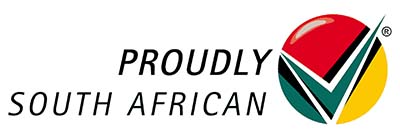In asset management, project management plays a vital role in ensuring that asset-related projects are executed efficiently, within budget, and on time.
Whether it’s planning maintenance, managing upgrades, or overseeing acquisitions, effective project management enables asset managers to maximize asset value and meet organizational goals.
In this post, we’ll explore key project management techniques tailored for asset managers, helping streamline workflows, control costs, and achieve better outcomes.
The Role of Project Management in Asset Management
Project management in asset management is focused on planning, executing, and overseeing various projects related to assets, including maintenance schedules, acquisition plans, and system upgrades.
By using structured project management methods, asset managers can organize tasks, track resources, reduce risks, and improve cost control.
Applying project management principles to asset-related tasks ensures that each project is completed efficiently, aligned with organizational goals, and optimized for resource use.
Key Project Management Techniques for Asset Managers
a. Goal Setting and Scope Definition
Setting clear goals and defining the project scope are critical first steps for successful project management.
For asset managers, goal setting means establishing specific, measurable, achievable, relevant, and time-bound (SMART) goals for each project.
By defining the project scope, you clarify the tasks involved, resources required, and deliverables expected, helping to prevent scope creep and maintain focus.
b. Work Breakdown Structure (WBS)
A Work Breakdown Structure (WBS) is a project management technique that breaks down complex projects into smaller, manageable tasks.
By dividing a large project into subtasks, asset managers can assign responsibilities, track progress more effectively, and ensure no task is overlooked.
This approach enables better control and makes it easier to monitor project milestones.
c. Risk Assessment and Management
Risk assessment is essential in asset management projects.
By identifying potential risks early—such as delays, budget overruns, or equipment failures—asset managers can develop contingency plans to address them.
Techniques like SWOT analysis (Strengths, Weaknesses, Opportunities, and Threats) and risk prioritization help asset managers proactively manage potential setbacks.
d. Resource Allocation and Budgeting
Effective resource allocation and budgeting are crucial for ensuring that projects are completed without exceeding budget or resource limitations.
Asset managers must allocate resources, including personnel, equipment, and finances, in the most efficient way.
Techniques like resource leveling (distributing work evenly) and cost estimation tools help maximize resources and control project expenses.
e. Scheduling and Timeline Management
Creating a detailed project timeline is vital for keeping projects on schedule.
Scheduling tools like Gantt charts, project milestones, and time tracking software allow asset managers to visualize project progress and make adjustments as necessary.
This approach helps teams stay organized, anticipate potential delays, and complete tasks on time.
f. Communication and Collaboration
Effective communication and collaboration are essential to keep everyone involved informed and aligned.
Regular updates with team members, stakeholders, and department heads help ensure that everyone understands project goals, roles, and timelines.
Scheduling regular meetings, using collaborative tools, and providing updates can enhance transparency and accountability.
g. Performance Tracking and KPI Monitoring
Monitoring project performance with Key Performance Indicators (KPIs) helps asset managers track progress and evaluate project success. KPIs, such as budget adherence, task completion rates, and on-time delivery, provide data-driven insights into project performance, enabling timely adjustments and continuous improvement.
h. Quality Control and Continuous Improvement
Ensuring quality in asset management projects is crucial to achieving desired outcomes. Quality control techniques include conducting regular inspections, checking for adherence to standards, and gathering feedback upon project completion.
Continuous improvement—learning from past projects and implementing best practices—can lead to more efficient and successful future projects.
Tools and Software for Project Management in Asset Management
a. Project Management Software
Project management software, such as Microsoft Project, Asana, and Trello, provides tools for organizing tasks, tracking timelines, and collaborating with team members.
These tools allow asset managers to monitor project progress, manage timelines, and improve coordination.
b. Asset Management Software
Specialized asset management software, such as Computerized Maintenance Management Systems (CMMS), integrates asset tracking with project management.
CMMS tools allow asset managers to plan maintenance schedules, track equipment performance, and automate routine asset tasks.
c. Communication and Collaboration Tools
Effective communication is essential in asset management projects.
Platforms like Slack, Microsoft Teams, and Zoom enable team collaboration, support remote meetings, and allow instant updates. These tools help streamline communication, ensure alignment, and maintain consistent project momentum.
Best Practices for Effective Project Management in Asset Management
a. Prioritize High-Impact Projects
Focus on projects that will provide the most significant value to the organization or address critical asset needs.
By prioritizing high-impact projects, asset managers can make the most of limited resources and maximize the benefits of their efforts.
b. Engage Stakeholders Early
Involving stakeholders from the start helps ensure buy-in, clarify project requirements, and secure support.
Engaging stakeholders early reduces miscommunications and ensures that the project aligns with organizational objectives.
c. Maintain Flexibility for Adjustments
Flexibility is essential in project management. Asset managers should be prepared to adjust project timelines, resources, or tasks as needed to accommodate changes in scope or unexpected challenges.
d. Document Processes and Results
Documenting processes and results helps create consistency, supports future planning, and provides insights for continuous improvement. Thorough documentation also serves as a valuable reference for future projects, helping teams build on past successes and avoid previous mistakes.
Example: Documenting steps and outcomes for a major facility upgrade project can help streamline similar projects in the future.
Common Challenges in Project Management for Asset Managers and How to Overcome Them
- Budget Constraints: Managing projects on limited budgets can be challenging. Asset managers can overcome this by focusing on high-priority tasks, reducing waste, and closely monitoring spending.
- Time Pressures: Tight deadlines require efficient scheduling and time management. Using project management software and clear timelines can help keep projects on track.
- Resource Limitations: Limited resources can impact project quality. Prioritizing high-impact projects and optimizing resource allocation are effective strategies to address this issue.
By planning carefully, prioritizing projects, and utilizing available resources effectively, asset managers can navigate these common challenges.
Conclusion
Effective project management techniques are essential for asset managers looking to optimize resources, reduce costs, and complete projects on time.
By implementing techniques such as goal setting, risk assessment, and performance tracking, asset managers can achieve better project outcomes and increase asset value.
Embracing project management principles in asset management contributes to long-term organizational success and enhances operational efficiency.








